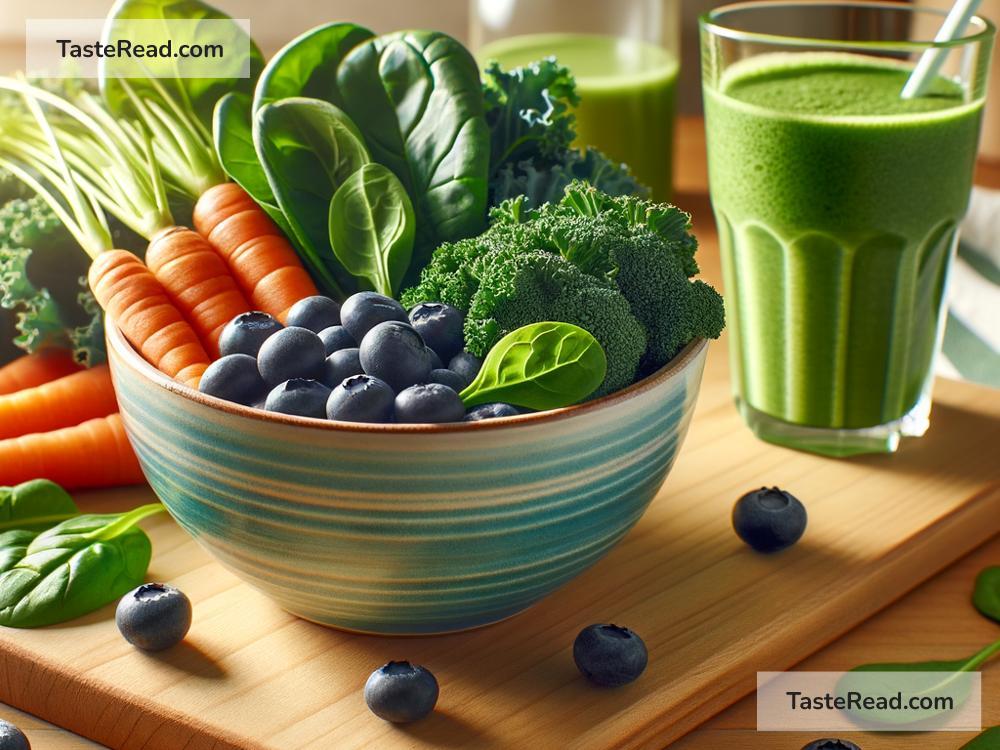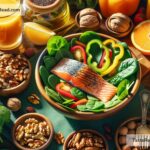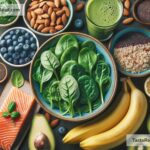Foods That Reduce Eye Strain: Nourishing Your Eyes Naturally
In today’s digital age, many of us spend hours staring at screens, whether it’s a computer, smartphone, or TV. While technology connects us, prolonged screen time takes a toll on our eyes. Eye strain is becoming increasingly common and can lead to discomfort, tiredness, and even headaches. Luckily, certain foods can help reduce eye strain by boosting eye health and providing essential nutrients. Here’s a guide to the best foods for happy, healthy eyes.
Why Does Eye Strain Happen?
Eye strain occurs when your eyes work harder than usual. This often happens during activities like reading, using a computer, or focusing on tiny details for long periods. It can lead to dry eyes, blurred vision, and general fatigue. But food plays an important role in keeping your eyes strong and reducing damage over time.
Many foods contain vitamins and antioxidants that support eye function. Eating a balanced diet packed with these nutrients is one of the simplest ways to protect your eyes and prevent discomfort.
Foods That Are Good for Eye Health
Here’s a list of some superfoods that keep your eyes healthy and help reduce strain:
1. Carrots
Carrots are famous for being “good for your eyes,” and it’s true! They contain beta-carotene (a type of vitamin A), which helps maintain healthy vision. Vitamin A plays an important role in preventing dry eyes and supporting night vision. If your daily screen time leaves you feeling like your eyes are tired and dry, snacking on carrots might be a good idea.
2. Leafy Greens
Spinach, kale, and other leafy greens are packed with lutein and zeaxanthin, two powerful antioxidants. These nutrients act like natural sunscreens for your eyes, reducing damage caused by blue light from screens. They also lower the risk of developing eye diseases like macular degeneration down the road. Blend these greens into a smoothie or toss them into a salad for a nutrient boost.
3. Fatty Fish
Salmon, tuna, and mackerel are great sources of omega-3 fatty acids. Omega-3s are essential for keeping your eyes hydrated, preventing dry eye syndrome, and reducing inflammation. If your eyes feel dry or irritated after hours of screen time, adding fatty fish to your meals can help. If you’re not much of a fish eater, consider supplements like fish oil to get your omega-3s.
4. Eggs
Eggs are another amazing food for eye health. The yolks are rich in lutein, zeaxanthin, and zinc, which keep the retina functioning well. Incorporate eggs into your breakfast to keep your vision sharp and reduce the effects of long hours of screen exposure.
5. Citrus Fruits
Oranges, lemons, grapefruits, and other citrus fruits are loaded with vitamin C. This antioxidant helps keep the blood vessels in your eyes healthy and prevents damage from free radicals. Consuming citrus can also help delay the development of cataracts as you age. Reach for an orange as a snack or squeeze some lemon into your water!
6. Nuts and Seeds
Almonds, sunflower seeds, and walnuts are excellent sources of vitamin E and omega-3 fatty acids. Vitamin E protects your eyes from oxidative stress and helps slow vision loss. Nuts and seeds make the perfect portable snack and are a great addition to salads or yogurt bowls.
7. Sweet Potatoes
Much like carrots, sweet potatoes are full of beta-carotene, which supports overall eye health. They’re also an excellent source of vitamin E. Roasted sweet potatoes or baked fries are simple, tasty ways to incorporate this veggie into your diet.
8. Bell Peppers
Bell peppers are eye-friendly veggies loaded with vitamin C and beta-carotene. They can help improve your vision and reduce strain caused by prolonged screen use. Red, yellow, and orange peppers make colorful, nutrient-packed additions to any dish!
9. Blueberries
Blueberries are rich in antioxidants that can improve circulation to the eyes and help reduce inflammation. Studies suggest they may even improve your ability to see in dim lighting. Toss them into oatmeal, smoothies, or yogurt for a sweet snack filled with eye-friendly benefits.
10. Water
While technically not food, staying hydrated is crucial for eye health. Dehydration can lead to dry eyes, causing discomfort and irritation. Drink plenty of water throughout the day, and try eating hydrating foods like cucumbers and watermelon.
Additional Tips to Reduce Eye Strain
While the right foods help protect your eyes in the long term, don’t forget to take steps to prevent strain when staring at screens:
- Follow the 20-20-20 Rule: Every 20 minutes, pause and look at something 20 feet away for at least 20 seconds. This gives your eyes a break.
- Blink Often: Blink to keep your eyes moist and comfortable, especially if you’re staring at a screen for hours.
- Use Proper Lighting: Avoid working in dim or overly bright environments that strain your eyes.
- Wear Blue-Light Glasses: They can help filter out blue light from screens, reducing the impact on your eyes.
Conclusion
Your eyes work hard every day, especially in our screen-heavy world. Adding eye-friendly foods to your diet is a simple way to keep them healthy and reduce strain. Carrots, leafy greens, fatty fish, eggs, and citrus fruits are just a few foods packed with nutrients that protect your eyes from overuse and prevent vision problems in the future.
Give your eyes the care they deserve by eating a colorful variety of fruits, veggies, and other healthful foods—your eyes will thank you!


